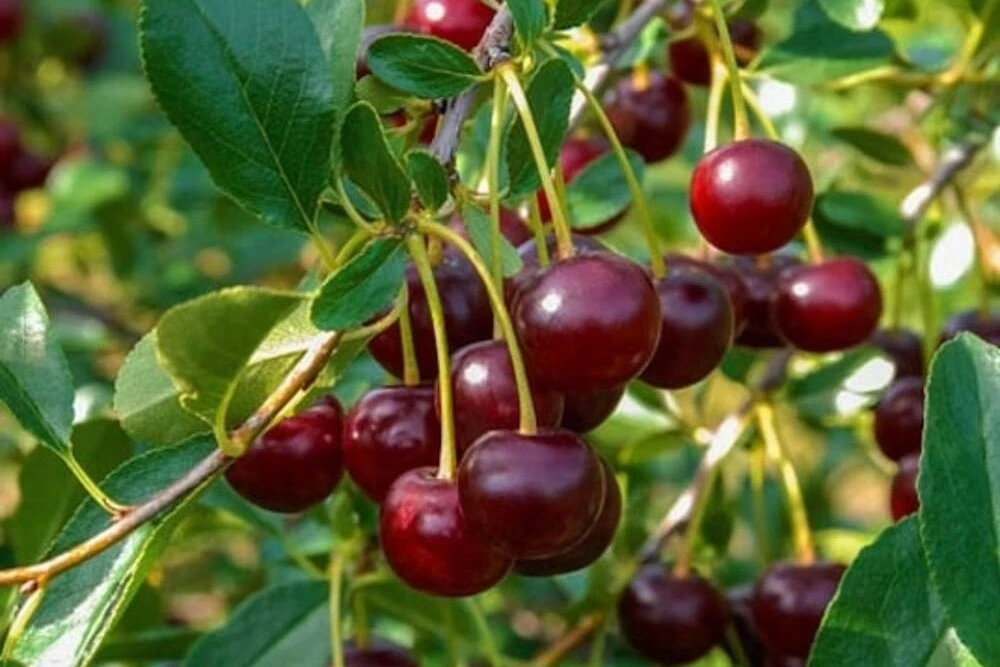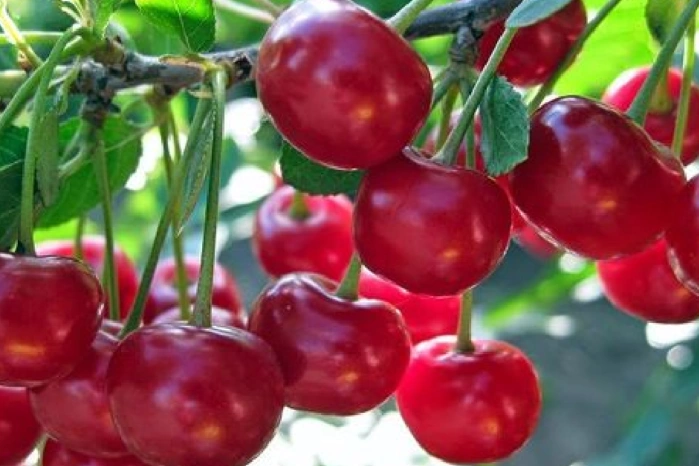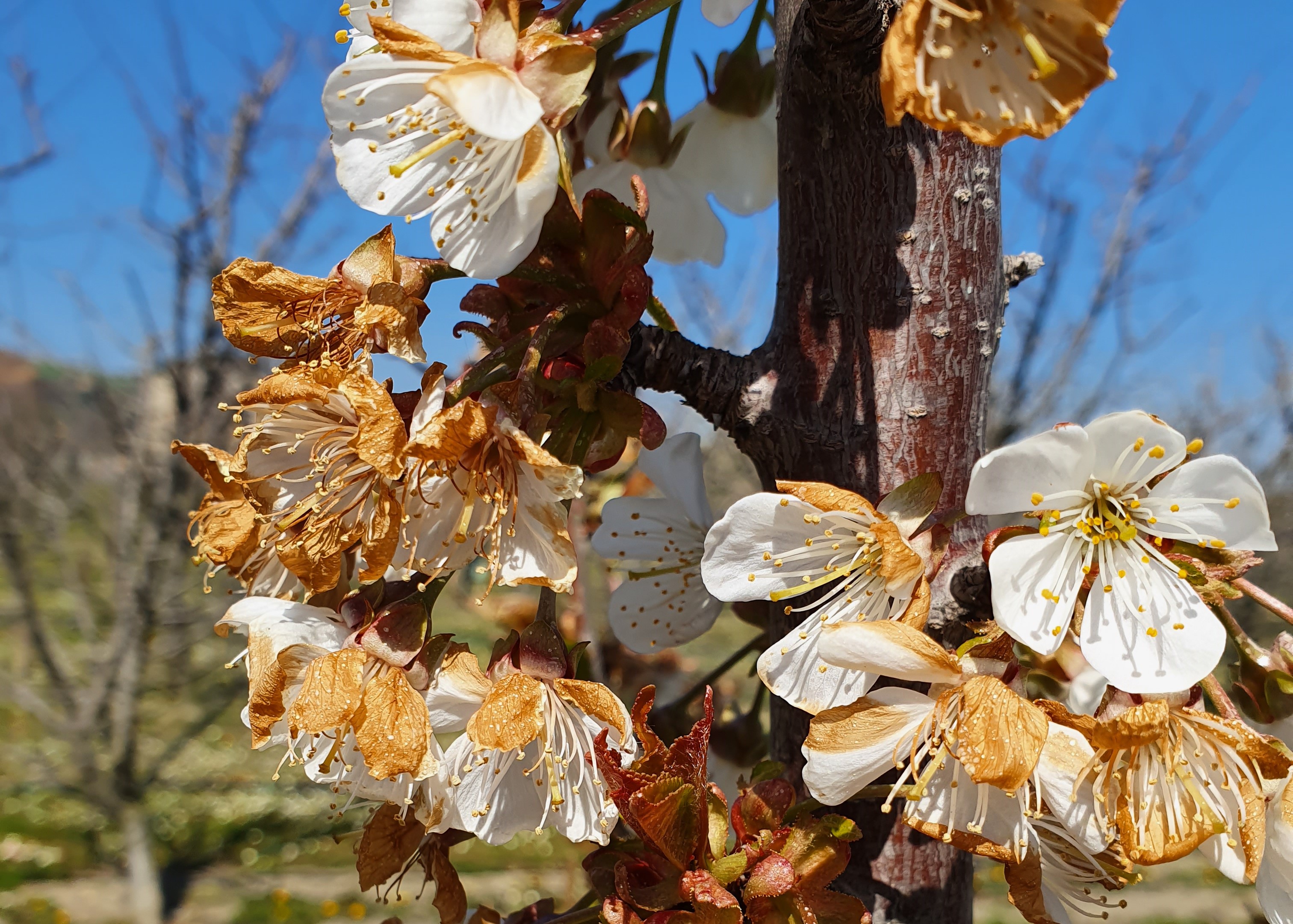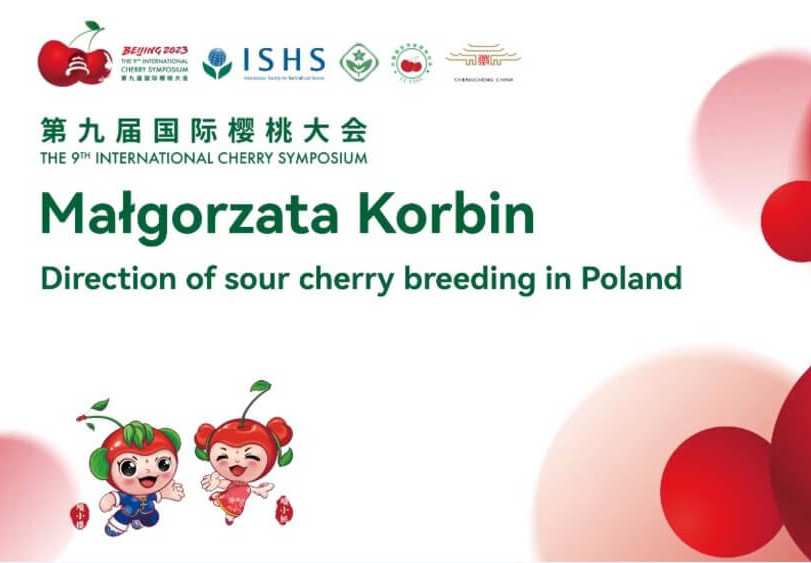The cultivation of sour cherry (Prunus cerasus L.) plays a significant role in Romania. The country offers favorable soil and climate conditions and boasts a long-standing tradition in varietal selection.
Since 1970, in an effort to counteract genetic erosion and preserve fruit biodiversity, systematic activities for the collection, conservation, and evaluation of sour cherry genetic resources have been undertaken. Today, these resources form one of the most solid foundations for the country’s genetic improvement programs.
The genetic heritage currently includes 238 accessions preserved ex situ at two research centers: the “Research Institute for Fruit Growing” in Pitești and the “Research Station for Fruit Growing” in Iași. These collections consist of autochthonous and foreign cultivars, selections, clones, local varieties, and landraces.
 Figure 1: cv Crisana
Figure 1: cv Crisana
Genetic base and breeding goals
This genetic base is essential for breeding programs, which today aim to develop cultivars that are more productive, resistant to major diseases such as Monilia and anthracnose, self-fertile, suitable for mechanical harvesting, and bear high-quality fruit intended for both processing industries and the fresh market.
Other goals of the breeding programs include extending the ripening calendar, achieving compact plant growth, and enhancing the organoleptic quality of the fruit, especially in terms of size, firmness, color, and flavor.
To meet these objectives, many parent genotypes with desirable traits have been selected and utilized. For instance, cultivars like “Pitic,” “Bucovina,” “Vrâncean,” and “Dropia” have been chosen for their late blooming, strong disease resistance, or self-fertility.
Selected cultivars and strategies
Other varieties such as “Rival” and “Stelar” have been valued for fruit quality, productivity, and suitability for intensive cultivation. Breeding strategies have included clonal selection from local populations, controlled crossing, and open pollination.
Over the past 55 years, this approach has led to the registration of 19 new cultivars in Romania, many of which have become widely adopted in modern orchards due to their excellent agrobiological characteristics.
Among these, “Timpurii de Pitești”, “Țarina”, “Ilva”, “Pitic”, “Bucovina”, “Vrâncean”, “De Botoșani”, and “Rival” stand out for their earliness, fruit quality, and disease resistance. These new cultivars have greater commercial value thanks to their larger fruits, which are more suitable for fresh consumption compared to traditional varieties.
 Figure 2: cv Stelar
Figure 2: cv Stelar
Innovation and modernization
Some, like “Stelar”, have been developed through crosses between local varieties (“Mocănești 16” x “Engleze timpurii”) and offer outstanding overall quality, making them competitive even on the international stage.
The adoption of modern biotechnological practices has further expanded the potential of breeding efforts, overcoming the limitations of traditional methods and accelerating the selection of superior genotypes.
Thanks to these advancements, Romania has succeeded in preserving its fruit-growing identity while also modernizing the sector, responding to the demands of an increasingly quality-conscious fresh fruit market.
Conclusion
In conclusion, Romania’s sour cherry breeding program is a virtuous example of how the conservation and enhancement of genetic resources (biodiversity) can support the development of a modern and sustainable fruit sector, improving competitiveness in both domestic and international markets.
Source: Stan, I. A., Butac, M., & Hoza, D. (2024). Sour cherry germplasm resources and breeding in Romania. Scientific Papers. Series B. Horticulture, 68(2).
Image source: OLX
Andrea Giovannini
University of Bologna (ITA)
Cherry Times - All rights reserved














